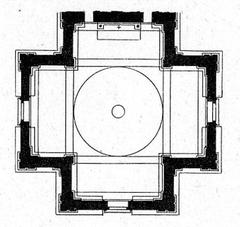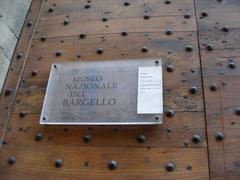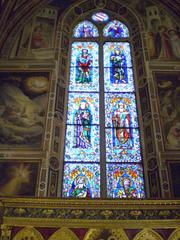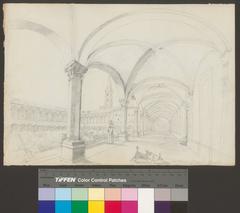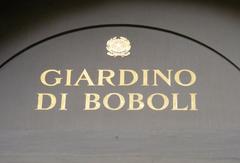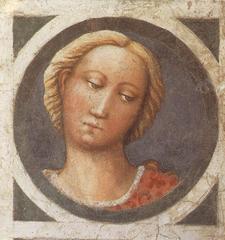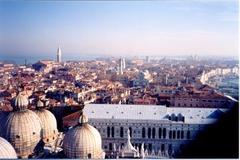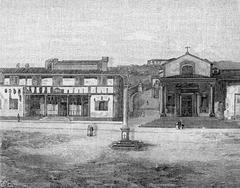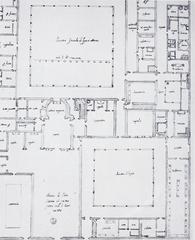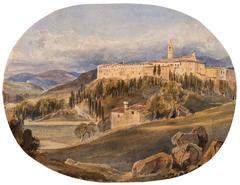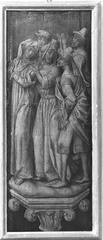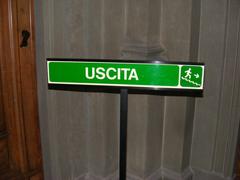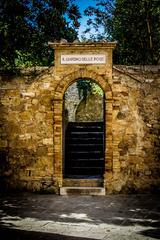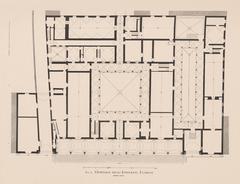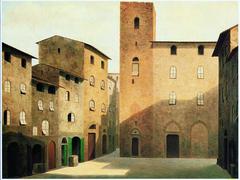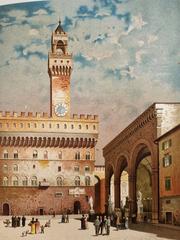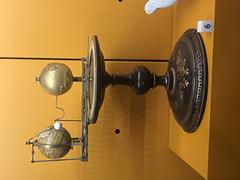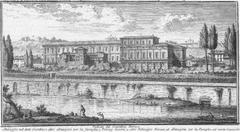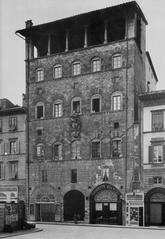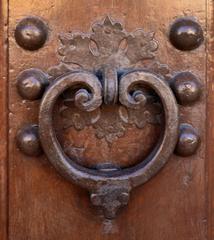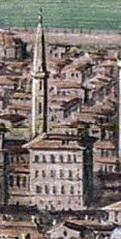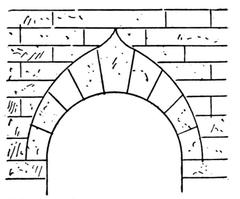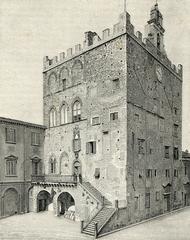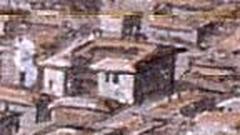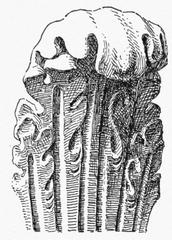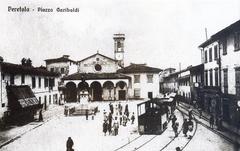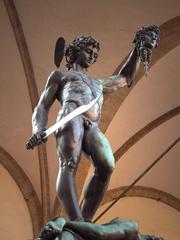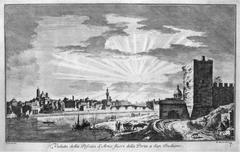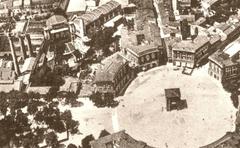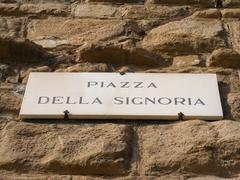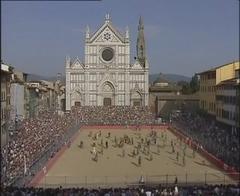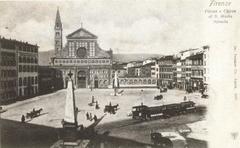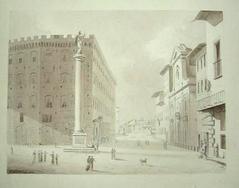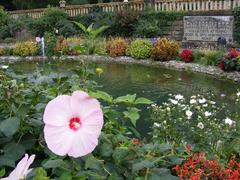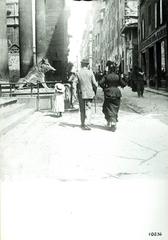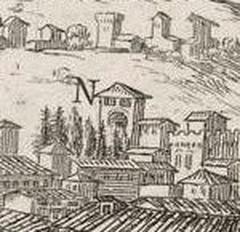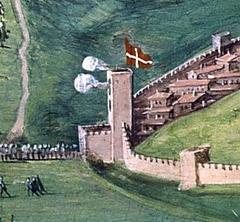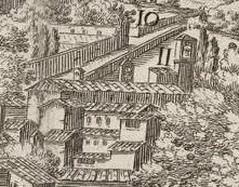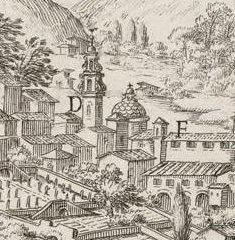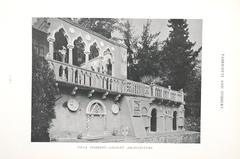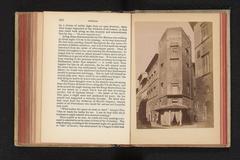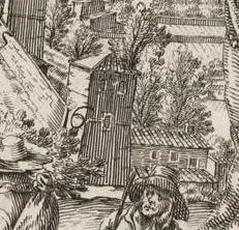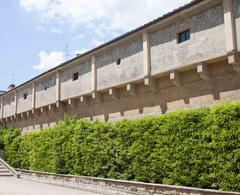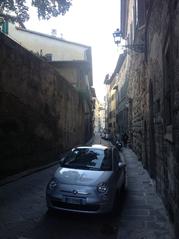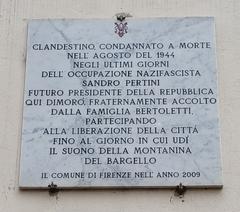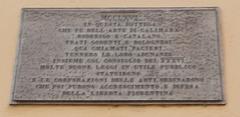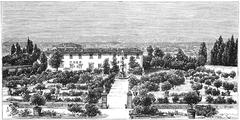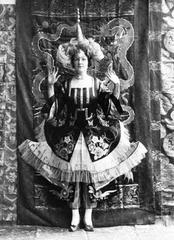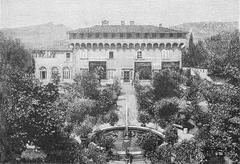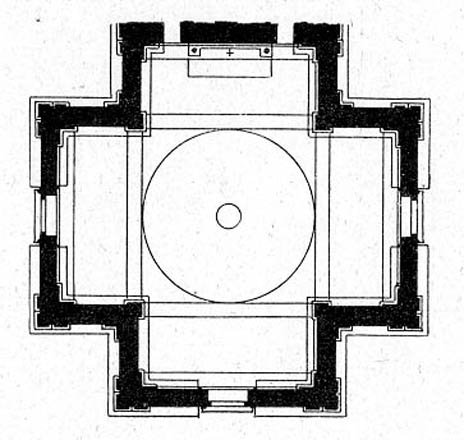
Visiting Basilica di Santa Maria delle Carceri: A Complete Guide
Publication Date: 22/07/2024
Introduction to the Basilica di Santa Maria delle Carceri
The Basilica di Santa Maria delle Carceri, located in Prato near Florence, Italy, is a stunning example of Renaissance architecture and holds significant historical, cultural, and spiritual value. This guide provides a comprehensive overview of the basilica, delving into its miraculous origins, architectural beauty, and enduring significance, making it an essential destination for visitors to Florence. Constructed under the auspices of Lorenzo de’ Medici and designed by the renowned architect Giuliano da Sangallo, the basilica epitomizes the principles of Renaissance architecture such as symmetry, proportion, and harmony (Florence Inferno). The basilica’s origins trace back to 1484 when a young boy claimed to have witnessed an image of the Virgin Mary come to life on the wall of the town’s prison, leading to widespread veneration and the subsequent decision to build a church on the site. This site, now a beacon of Renaissance artistry, attracts numerous visitors yearly, offering a profound connection to Italy’s rich cultural and spiritual heritage (Visit Tuscany). This guide aims to provide all the essential information you need to ensure a memorable and respectful visit to this iconic site, including historical insights, architectural marvels, and practical visitor information.
Contents Overview
- Introduction
- Explore the Rich History and Architectural Splendor of Basilica di Santa Maria delle Carceri
- Origins and Early History
- Architectural Design and Construction
- Architectural Features
- Interior Design and Artwork
- Complete Guide to Visiting Basilica di Santa Maria delle Carceri
- Opening Hours and Best Time to Visit
- Admission Fees
- Guided Tours and Audio Guides
- Dress Code
- Photography
- Accessibility
- Nearby Attractions
- Local Cuisine and Dining Options
- Safety Tips
- Language
- Souvenirs and Shopping
- Transportation
- Weather Considerations
- Conclusion
Explore the Rich History and Architectural Splendor of Basilica di Santa Maria delle Carceri
Origins and Early History
The story of the Basilica di Santa Maria delle Carceri begins in 1484 when a young boy claimed to have witnessed an image of the Virgin Mary come to life on the wall of the town’s prison. This miraculous event spurred widespread veneration and the decision to construct a church on the site.
Architectural Design and Construction
Construction of the basilica started in 1485 under the auspices of Lorenzo de’ Medici, a key figure in Florence’s political and cultural spheres. The project was handed to the esteemed architect Giuliano da Sangallo, known for his contributions to Renaissance architecture. By 1495, the basilica was completed, exhibiting a harmonious blend of classical and innovative elements.
Architectural Features
The basilica’s design epitomizes Renaissance architecture, characterized by symmetry, proportion, and classical elements. It features a Greek cross plan with equal arms and a central dome, reflecting Renaissance ideals of balance and harmony. The exterior, adorned with white and green marble, creates a striking visual contrast.
Interior Design and Artwork
Inside, the basilica is equally breathtaking, featuring frescoes and altarpieces by notable artists of the period. The main altar boasts a painting of the Virgin Mary, attributed to the school of Fra Bartolomeo. The frescoes narrate scenes from the Virgin Mary’s life and other biblical stories, enhancing the basilica’s spiritual and artistic significance.
Preservation and Restoration
The basilica has undergone several restoration projects over the centuries to maintain its structural integrity and preserve its artistic treasures. Significant restoration efforts took place in the 19th and 20th centuries, ensuring the basilica remains an enduring testament to Renaissance artistry.
Modern-Day Relevance
Today, the Basilica di Santa Maria delle Carceri continues to be a vital religious and cultural landmark. It hosts regular religious services, cultural events, and guided tours, allowing visitors to experience its historical and spiritual significance firsthand. The basilica’s lasting appeal lies in its ability to connect past and present, offering a glimpse into Prato and Florence’s rich history and cultural heritage.
Complete Guide to Visiting Basilica di Santa Maria delle Carceri
Opening Hours and Best Time to Visit
The Basilica di Santa Maria delle Carceri is generally open to visitors from 9:00 AM to 6:00 PM, Monday through Saturday. On Sundays and public holidays, the opening hours may vary, often opening later in the morning and closing earlier in the evening. It is advisable to check the official website or contact the basilica directly for the most current information on opening hours.
The best time to visit the basilica is during the early morning or late afternoon to avoid the peak tourist hours. Visiting during these times allows for a more serene experience, enabling you to appreciate the architectural beauty and spiritual ambiance without the crowds.
Admission Fees
Entrance to the Basilica di Santa Maria delle Carceri is typically free. However, donations are encouraged to help with the maintenance and preservation of this historic site. Special exhibitions or guided tours may have a nominal fee. It is recommended to carry some cash for donations or any small fees that might be required.
Guided Tours and Audio Guides
For a more enriching experience, consider joining a guided tour. These tours are often available in multiple languages, including English, and provide in-depth historical and architectural insights. Audio guides are also available for those who prefer to explore at their own pace. Booking a guided tour in advance is advisable, especially during peak tourist seasons.
Dress Code
As with many religious sites in Italy, a modest dress code is enforced at the Basilica di Santa Maria delle Carceri. Visitors are expected to cover their shoulders and knees. It is recommended to carry a shawl or scarf if you are wearing sleeveless tops or shorts. This dress code is a sign of respect for the sacred nature of the site.
Photography
Photography is generally allowed inside the basilica, but the use of flash and tripods is usually prohibited to preserve the delicate artworks and maintain a respectful atmosphere. Always check for any specific photography guidelines posted at the entrance or ask the staff on duty.
Accessibility
The Basilica di Santa Maria delle Carceri is committed to being accessible to all visitors. There are ramps and elevators available for those with mobility issues. It is advisable to contact the basilica in advance to ensure that all necessary accommodations can be made for your visit.
Nearby Attractions
The basilica is located in the heart of Prato, making it convenient to visit other nearby attractions. Some notable sites within walking distance include:
- Prato Cathedral: Another stunning example of religious architecture.
- Castello dell’Imperatore: A medieval castle with panoramic views of Prato.
- Textile Museum: Explore Prato’s rich history in the textile industry.
Local Cuisine and Dining Options
After visiting the basilica, indulge in some local cuisine. There are numerous trattorias and cafes in the vicinity offering traditional dishes such as ribollita (a hearty vegetable soup), bistecca alla Fiorentina (Florentine steak), and cantucci with vin santo (almond biscuits with sweet wine). Some recommended dining spots include:
- Trattoria Mario: Known for its authentic Tuscan dishes and vibrant atmosphere.
- Osteria Vini e Vecchi Sapori: A cozy spot offering a range of traditional dishes.
- Gelateria dei Neri: Perfect for a refreshing gelato break.
Safety Tips
Prato is generally a safe city for tourists, but it is always wise to take standard precautions. Keep an eye on your belongings, especially in crowded areas, and be aware of your surroundings. Avoid carrying large amounts of cash and use a money belt or secure bag to protect your valuables.
Language
While Italian is the official language, many people in Prato, especially those working in the tourism industry, speak English. Learning a few basic Italian phrases can enhance your experience and is appreciated by the locals.
Souvenirs and Shopping
There are several shops near the basilica where you can purchase souvenirs. Look for items such as religious artifacts, local crafts, and Florentine leather goods. The nearby San Lorenzo Market is also a great place to find unique gifts and souvenirs.
Transportation
The basilica is easily accessible by public transportation. Florence’s efficient bus system can take you close to the basilica, with several stops nearby. If you prefer walking, the basilica is within a reasonable distance from many central locations. Taxis and ride-sharing services are also readily available.
Weather Considerations
Prato experiences a Mediterranean climate, with hot summers and mild winters. If visiting during the summer months, be prepared for high temperatures and consider carrying water and wearing sunscreen. In the winter, while temperatures are mild, it is advisable to bring a light jacket or sweater.
Conclusion
The Basilica di Santa Maria delle Carceri stands as a testament to the artistic and architectural brilliance of the Renaissance. Whether you’re visiting Prato or exploring from afar, this basilica offers a profound connection to Italy’s rich cultural and spiritual heritage. Plan your visit today and experience its timeless beauty and significance. For more travel tips and updates, download our mobile app Audiala, check out our related posts, or follow us on social media.
FAQ
Q: Can I take photos inside the Basilica di Santa Maria delle Carceri?
A: Yes, photography is generally allowed, but the use of flash and tripods is usually prohibited.
Q: Are there guided tours available at the Basilica di Santa Maria delle Carceri?
A: Yes, guided tours are often available in multiple languages, including English. Booking in advance is advisable, especially during peak tourist seasons.
Q: What are the visiting hours for the Basilica di Santa Maria delle Carceri?
A: The basilica is open daily from 9:00 AM to 6:00 PM.
Q: Is there an entry fee for the basilica?
A: Entry is free, but donations are welcome.
Q: What is the best time to visit the basilica?
A: Early morning or late afternoon are particularly good times to visit, as the light is softer and creates beautiful shadows.
Q: Are there any nearby attractions worth visiting?
A: Yes, the Prato Cathedral, Castello dell’Imperatore, and Textile Museum are all nearby and worth visiting.
Sources and References
- Florence Inferno. (2023). Basilica di Santa Maria delle Carceri
- Visit Tuscany. (2023). Basilica di Santa Maria delle Carceri
- Prato Turismo. (2023). The Basilica of Santa Maria delle Carceri
